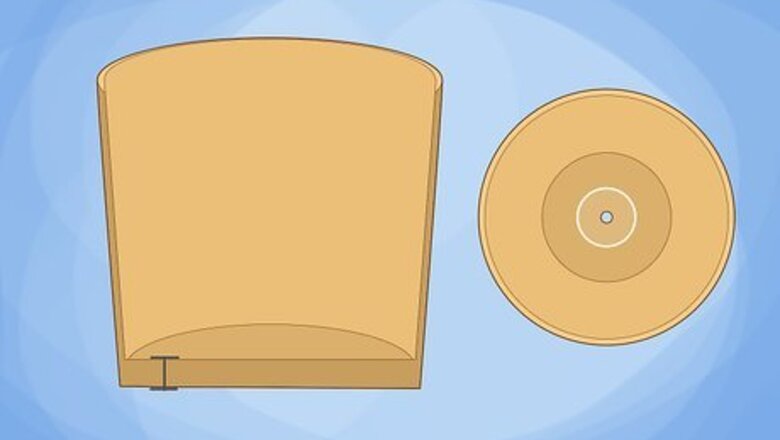
views
X
Research source
Planting Your Croton Petra
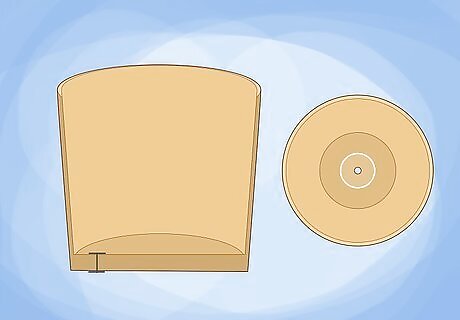
Plant your croton petra in a bottom-heavy pot with drainage holes. Croton petra plants tend to grow upwards and can become top-heavy. Make sure you choose a sturdy, well balanced pot that can handle the weight of a croton petra, like clay or ceramic. Look for at least 1 drainage hole in the bottom of your pot to ensure that your plant can drain any moisture as it needs to. Most plants come in a plastic pot from the nursery or garden supply store. Plants should not be left in plastic pots for longer than a week after you take them home.
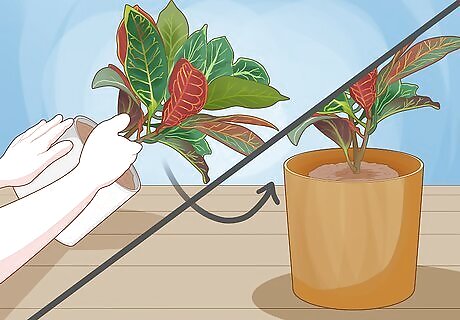
Transfer your plant to its new pot without disturbing the roots. Rub the sides of the plastic container that your plant is in and then lay it on its side. Gently pull the croton petra out of the plastic container and leave the roots intact. Place the plant in its new pot and add potting soil if there are gaps between the soil and the pot. Disturbing the roots can cause your plant to go into shock and become sick.
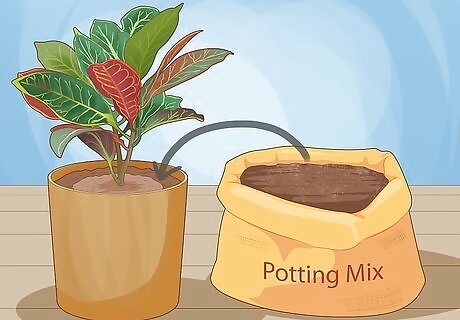
Use a potting mix that is loose and well-draining. Compact soil will only serve to compress and suffocate the roots of your croton petra. Add a loose potting soil with a pH between 4.5 and 6.5. Do not use a rock-heavy soil, as the calcium in the rocks can disturb the roots of your plant.
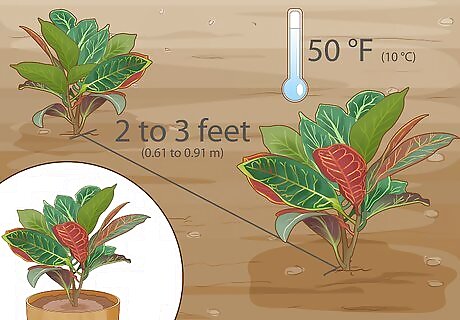
Put your plant in the ground if the minimum temperature is above 50 °F (10 °C). If you live in a warm climate, you don’t have to keep your croton Petra indoors. Use your plant as a landscaping item if the temperature is above 50 °F (10 °C). As soon as it gets colder, you must bring your croton petra inside, or it could die.Tip: If your climate gets really cold every winter, you should probably keep your plant indoors year round. Re-planting your croton petra each season can be damaging and may cause it to die. If you plant multiple croton Petras outdoors, keep them 2 to 3 feet (0.61 to 0.91 m) away from each other in the ground.
Keeping Your Croton Petra Healthy
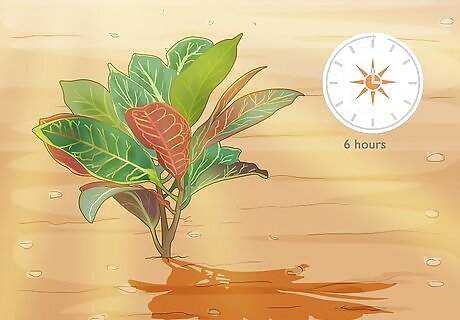
Place your plant in an area that gets 6 to 8 hours of sunlight a day. Croton Petra's love to be kept warm and they need the sunlight to do so. Make sure your plant is in an area that gets at least 6 to 8 hours of sunlight per day. Place your plant in an east or west-facing window to make sure it gets enough sun. South-facing windows get too much sun per day for the croton petra and could scorch or burn its leaves.
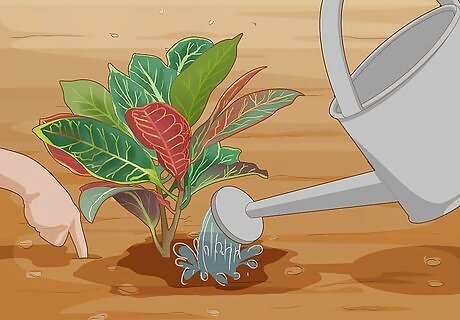
Water your plant whenever the soil feels dry. Croton petra plants do not need to be watered every day. Wait for your soil to dry out before you add anymore water. Rub the top portion of soil between your fingertips. Wait another day to water if the soil feels moist. If your plant’s leaves are wilting, it could be a sign you are watering it too much. Try watering it less to see if the leaves spring back.

Mist the leaves once a week if you aren’t in a humid environment. Croton petra plants love humidity and keeping moist. If you live in a dry climate, put some water in a spray bottle and mist the leaves at least once a week to keep them moist and healthy. If you are in a humid environment but you use a dehumidifier or an air conditioner, you should still mist the leaves of your plant once a week.
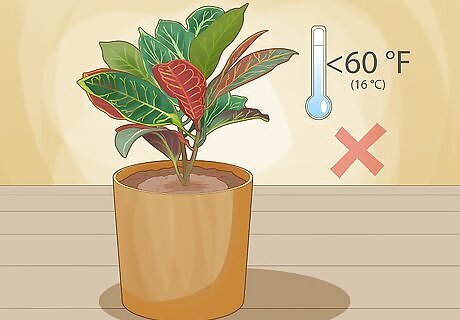
Keep your plant out of chilly drafts and temperatures. Croton petra plants are very sensitive to temperature, and even being placed in a drafty area of your home can cause them to become unhealthy if they fall below 50 °F (10 °C). Place your plant far away from fans, doorways, vents, and any other areas that may get a draft.
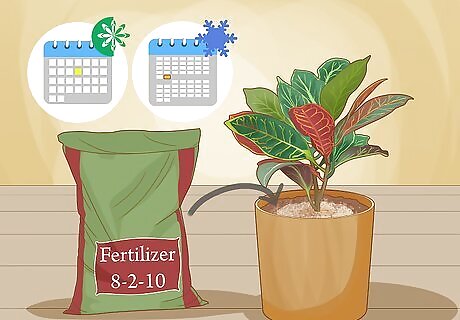
Fertilize your croton petra every month during the growing season. These plants don’t need a ton of food to grow. Add 1 cup (200 g) of 8-2-10 fertilizer to the top of your pot in a ring around the base of the plant. Do this every month during the spring and summer and reduce the amount of fertilizer you give your plant during the winter to every other month. Do not add any fertilizer to your plant in the fall, since the leaves need to harden for winter.
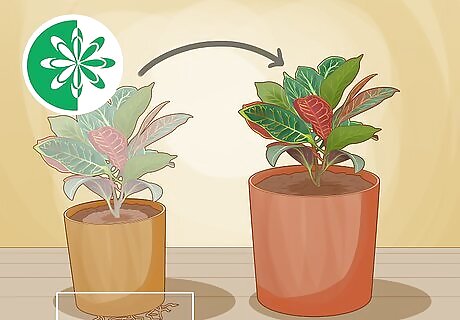
Repot your plant in the spring if it outgrows its current pot. If you notice that the roots of your plant are crawling out through the bottom of your pot, it may be time to replant your croton petra. Choose a new pot that is 2 inches (5.1 cm) larger than the old one and wait until spring to replant it. Gently dig the croton petra out of its original pot and transfer it to its new one as quickly as you can. Fill in the gaps with loose potting soil.Tip: If the roots of your plant are coiled tightly together, gently break them up with your fingers before you place it in its new pot.
Fighting Common Pests and Problems

Wash your plant’s leaves with soapy water to remove pests. Spider mites and mealybugs love the croton petra and can turn the leaves yellow and splotchy. If you notice these pests on your plant, use soapy water to rub the leaves and then rinse it to remove the soap. The insects themselves can be hard to spot since they are so small, so look for the yellow splotches on the leaves to identify them.
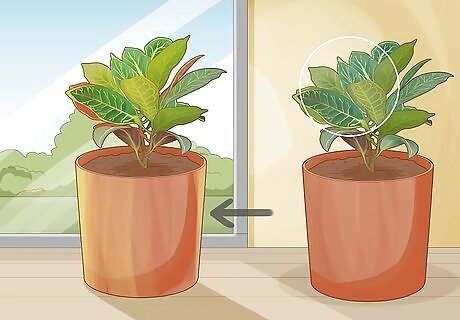
Move your plant to a better light source if the leaves stay green. Croton petra plants are known for their vibrant yellow, red, and green leaves. If the leaves of your plant are staying all one color, it may be because they are not getting enough sunlight. Move your plant to a more well-lit area to see if that helps.Tip: Your plant may also need more sunlight if the colors of the leaves seem dull.
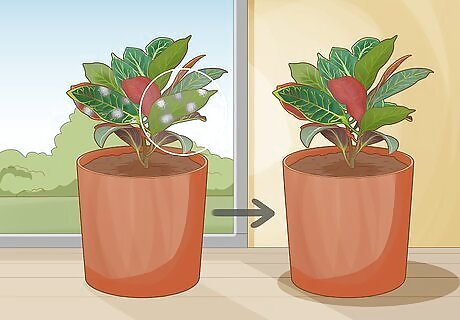
Keep your plant out of the sun if the leaves get gray patches. Too much sunlight can burn the leaves of your plant. If your croton petra is getting patches of gray on its leaves, it may be getting too much sun. Move your plant away from the window into an area that gets less sunlight per day. South-facing windows can provide too much sun for a croton petra. Try choosing an east or west-facing window instead.
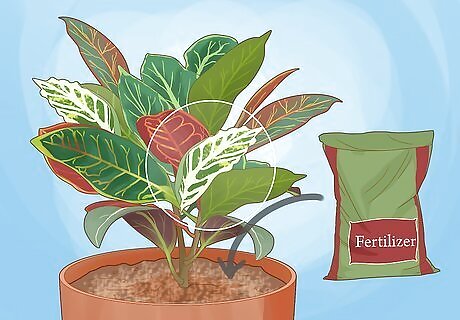
Fertilize your plant less if the leaves start to twist. If your plant is intaking too many nutrients, it could cause the leaves to twist and warp. If you notice that your croton petra plant’s leaves aren’t flat, reduce the amount of times you fertilize it per season.
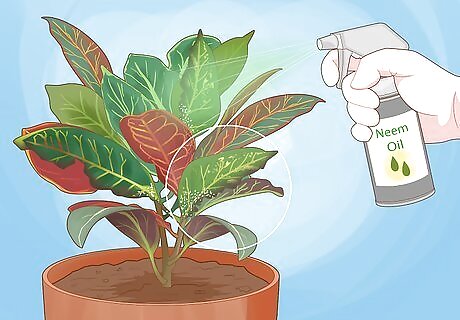
Treat your plant with neem oil if it develops spots on the leaves. Brown or black spots on the leaves of your croton petra plant could mean that it has a disease called anthracnose, or leaf-blight. To cure this disease, spray the leaves of your plant with neem oil once a week until the problem clears up. You can find neem oil at most garden supply stores.










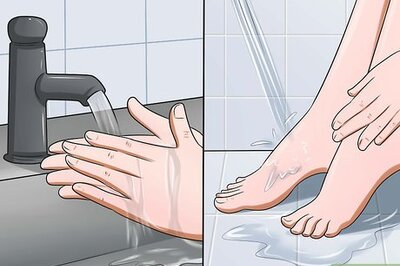
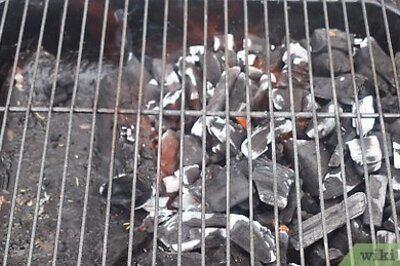

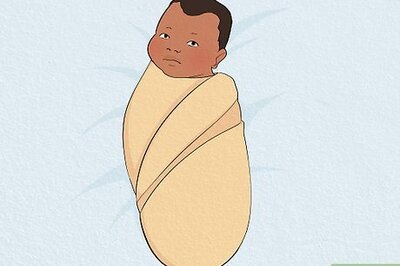




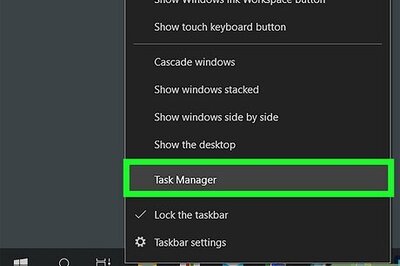

Comments
0 comment